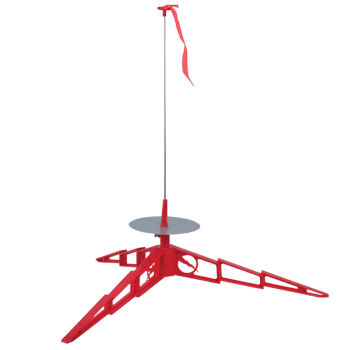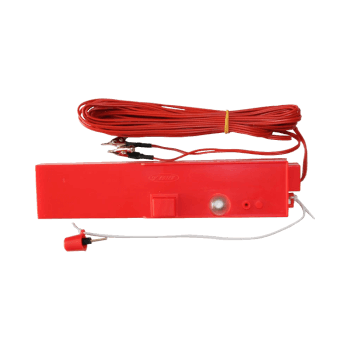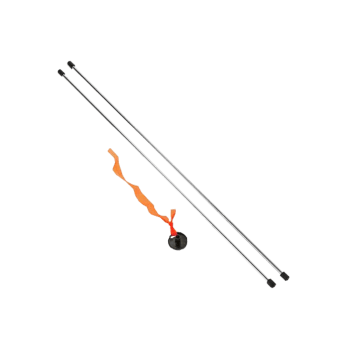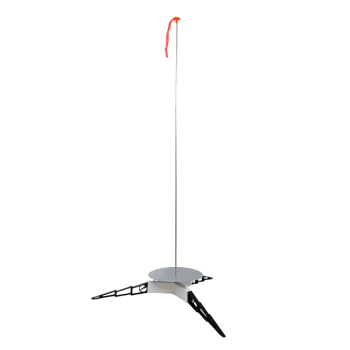Choosing the Right Setup for Your Rocketry Needs
What is a "Launch System"?
A launch system is an essential component for rocketry, serving multiple critical functions to ensure a successful launch. It is responsible for igniting the rocket engine and guiding the rocket on its upward trajectory. Launch systems are designed to accommodate rockets of various sizes and power levels.
Components of a Launch System
- Launch Pad: The launch pad supports the rocket and aims it skyward. It also acts as a flame deflector, preventing the rocket's exhaust from scorching the ground or igniting dry grass. Launch pads come with a swivel or tilt mechanism to adjust the rocket's launch angle.
- Launch Controller: This is the electronic device that initiates the rocket's ignition. It comes with a safety key to prevent accidental launches.
- Launch Rod or Rail: These guide the rocket during the initial moments of the launch, ensuring it ascends in the desired direction.
- Blast Deflector: Usually part of the launch pad, the blast deflector redirects the intense heat and force of the rocket's exhaust away from the launch pad and the ground.
Launch systems come in different sizes and configurations, so it's crucial to choose one that matches the specifications of your rocket. Another important factor to consider is your level of involvement in model rocketry. Whether you're a casual hobbyist or a dedicated enthusiast, the right launch system is key to a successful and safe rocketry experience.
Rocket description says I need to buy Maxi Launch Rod, or 3/16" launch rod.
Some heavier rockets require a longer and slightly thicker launch rod, known as a 3/16" Rod, instead of the standard 1/8" rod. If you already have a Basic launch pad, you can usually just add a 3/16" Maxi rod to your existing setup.
Note: While a rocket requiring a 3/16" rod can technically be launched from a Basic pad, it's crucial to consider the engine size. Rockets with "E" engines are heavier and may require a more robust pad to ensure a stable launch. If you plan to use an "E" engine, you may need to upgrade to a pad specifically designed to handle the additional weight.
Transitioning from "D" to "E" Engines
Congratulations on taking a significant step in your rocketry journey! Moving from "D" to "E" engines marks your transition from low-power to mid-power rocketry. This change is both exciting and challenging, as "E" engines store more energy and are heavier, requiring you to adapt your launch setup accordingly.
Increased Weight and Energy
"E" engines are more powerful and heavier than "D" engines. This increased weight and stored energy mean that you'll need a more robust launch pad capable of supporting the additional load.
Safety Precautions
With the step up to "E" engines, the risk of Catastrophic Take-Off Failure (CATO) becomes more frequent. It's crucial to increase your respect for safety protocols. The recommended safe distance from the launch pad increases from 20 feet (approximately 6.1 meters) to 30 feet (approximately 9.1 meters).
Required Equipment
You'll need to switch to a launch pad specifically designed to handle rockets with "E" engines. Additionally, your launch controller should be capable of keeping you at least 30 feet away from the launch pad for added safety.
What's the Next Step?
If you're considering further advancements in model rocketry, you might be thinking about using composite engines. For more information on this, please see the next section.
What Do We Offer?
If you're making the transition to "E" engines, we offer a range of equipment to meet your new needs. Please note that this setup is the minimum required for mid-power rocketry with "E" engines. If you're considering moving on to composite motors, this may not be the right setup for you.
Moving On to Composite Motors
Switching to composite motors is a significant milestone that offers increased power and performance. However, it also comes with its own set of challenges and requirements.
What Makes Composite Motors Different?
Composite motors use a different type of propellant that offers more power per weight compared to traditional black powder engines. This propellant is also more challenging to ignite, requiring a 12V launch system for reliable ignition.
Equipment Requirements
- Launch Pad: Due to the increased weight and power, you'll need a more robust launch pad capable of handling composite motors.
- Launch Controller: A 12V launch controller is essential for igniting the composite propellant effectively.
Additional Considerations
Switching to composite motors also means you'll need to be more cautious about safety. The increased power and complexity make it crucial to follow all safety guidelines rigorously. Additionally, you'll most likely be using a 1/4" launch rod due to the increased weight and power of composite motors.
What Do We Offer?
For those looking to transition to composite motors, we offer specialized equipment to meet your needs. We have two types of launch pads: the Estes Pro Series Launch Base, which is big and sturdy, perfect for mid-powered rockets, and the Mantis Launch Pad, which includes slots for various launch rods. In terms of controllers, we offer the Pro Series II Launch Controller, powered by 6 'C' alkaline batteries and featuring 30 feet of heavy-duty cable, as well as the Interlock Launch Controller, suitable for motors up to "G".

Pro Series Pad: Ideal for mid-power rockets, offering stability and a sturdy design.
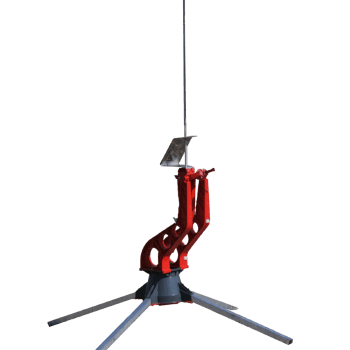
Mantis Pad: A versatile pad suitable for a variety of rockets, including those with composite motors.
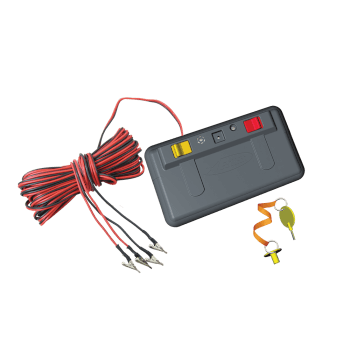
Pro Series Controller: Designed for 12V ignition systems, perfect for composite motors.

Interlock Controller: A reliable and safe option for igniting composite motors, with built-in safety features.
Is there a launch system that will work for all rocket sizes?
If you're looking for a versatile launch system that can handle a wide range of rocket sizes, the Complete Mid-Power Launch System is an excellent choice. This system includes the Mantis Launch Pad and the Interlock Controller, making it suitable for all low through mid-power rockets available on our site.

Mantis Launch Pad: Features fully adjustable elevation and azimuth, accepts multiple rod sizes, and has a swivel base for easy adjustments.

Interlock Controller: Designed to connect directly to any 12V battery, it includes 40 feet of heavy-duty power cord for a safe launch distance.
The system comes with a 1/4-inch launch rod, but you can easily add 1/8" and/or 3/16" launch rods for smaller rockets. Note that the Interlock Controller requires an external 12V battery.
Disclaimer: The content on this page is copyrighted material owned by Denau Hobby Supplies Ltd. and should not be copied, reproduced, or republished without explicit written permission. However, we do permit "fair use" of this content, including quoting or summarizing portions of it, as long as proper attribution is given, links are retained, and it is not used for commercial purposes.

